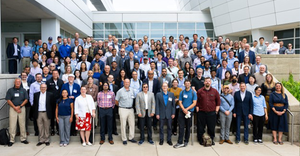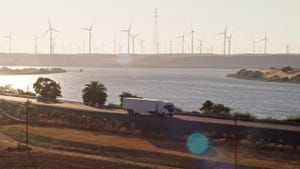LANDFILL: A Web of LFG Project Funding Ideas
November 1, 2001
Sarah Nichols
Landfill gas (LFG) utilization projects don't grow on trees, and neither does money. To help LFG projects find money, the U.S. Environmental Protection Agency's (EPA) Landfill Methane Outreach Program (LMOP), Washington, D.C., will publish “Funding Landfill Gas Projects: A Guide to State, Federal and Foundation Resources” in Dec. 2001. The guide will help state agency officials, landfill owners and operators, and developers identify funding programs, grants and other sources of project financing.
While landfill gas-to-energy (LFGTE) projects are newsy environmental topics because they capture a landfill's methane gas and convert it to a renewable energy source, finding the financial resources for such projects remains a challenge. To help, LMOP's guide provides funding information. For example, on the state level, there are several financing options available such as grants and low interest loans. LMOP's guide directs readers through several states' programs, providing background, a description, suggested steps and contact information. For some programs in which a grant or loan is the primary means of funding, an application form also is included. Currently, grant or loan opportunities are available in: Alabama, California, Colorado, Georgia, Idaho, Illinois, Iowa, Maryland, Missouri, New Jersey, New York, North Carolina, Ohio, Oregon, Pennsylvania, Washington and Wisconsin.
In Missouri, the state's Department of Natural Resources Energy Center, Jefferson City, Mo., has established a revolving loan initiative, called the Energy Loan Program. This program provides low-interest loans for energy efficiency and renewable energy projects to public schools and local governments. For instance, Pattonville High School, Maryland Heights, Mo., received a $150,000 loan from the fund to retrofit the school's existing boilers to operate on LFG.
Using the loan, the school installed a pipeline to run between the boilers and a nearby landfill. And as a “good neighbor” gesture, the landfill collected the LFG for free and installed a pipeline from the recovery system to the edge of the landfill, connecting it with the school's pipeline. The project has a payback of less than five years. And with LFG powering its boilers, Pattonville High School already is saving $40,000 annually in energy costs.
As another example, the Illinois Department of Commerce and Community Affairs (DCCA), Springfield, Ill., has created Illinois' Renewable Energy Resources Program (RERP), which provides grants for projects that use alternative energy technologies. RERP funds up to 50 percent, or a maximum of $550,000, for such things as LFGTE and organic waste use projects.
Similarly, Iowa created the Alternative Energy Loan Program in 1996 to encourage the development of alternative energy production facilities and small hydroelectric facilities. The program offers interest-free loans for up to half of a project's costs, or a maximum of $250,000. Loan terms are offered up to 20 years, and 20 percent of the program's portfolio is directed toward biomass-based projects. Iowa also has made changes to its property tax laws to support the development of LFG projects. The “methane gas conversion property” tax exemption covers properties and equipment related to the development of LFG projects, including personal property, real property, machinery, equipment and computers. Oregon, Maine, Texas, Virginia and Wisconsin have similar tax-exempt status laws.
However, funding is not only available on a state level. LMOP's guide outlines federal programs, detailing objectives, application requirements, application instructions and contact information for each program. Ten organizations with available grants are listed. Each organization provides national-level funding, has a history of funding energy projects and accepts unsolicited inquiries.
For instance, the U.S. Department of Energy's Office (DOE) of Energy Efficiency and Renewable Energy, Washington, D.C., frequently offers grants to for-profit, nonprofit and public entities to develop biomass energy technologies. The department's State Energy Program: Special Projects 2001 also encourages energy efficiency and renewable energy technologies. The guide provides contact information and an explanation of each funding opportunity.
Additionally, the guidebook assesses seven funding opportunities at the foundation level, breaking down objectives, requirements and the application process for each organization. Contact information and websites are listed. There are foundations, such as the Public Welfare Foundation: Environment Initiative, that support programs serving low-income populations. Most frequently, grassroots organizations concerned about the effects of pollution on human health and the environment have been awarded between $25,000 to $50,000.
The guide also can be used by states and other organizations as a blueprint for those interested in establishing their own LFG funding programs.
“This guide is a starting point, a quick and simple overview of some of the many funding sources that are available for LFG projects,” says Brian Guzzone, LMOP program manager. “Our objective, publishing this guide, is to help project partners find creative solutions to their funding needs.”
For a free copy of “Funding Landfill Gas Projects: A Guide to State, Federal and Foundation Resources,” call Brian Guzzone at (202) 564-2666. E-mail: [email protected]. To learn more about the EPA's LMOP program, visit www.epa.gov/lmop.
You May Also Like


